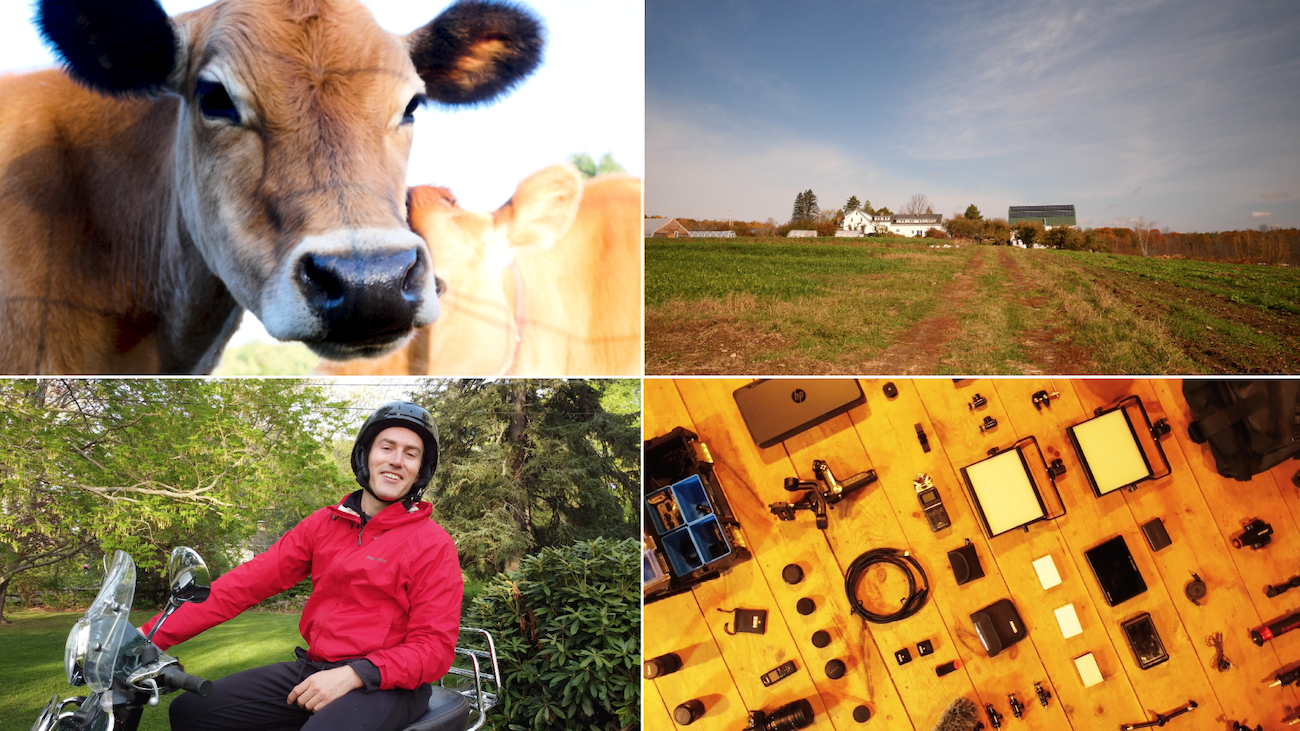EDITOR’S NOTE: This is the last episode in our five-part video series, “Field Testing,” in which independent video producer Alexander Trowbridge retreats to a farm to learn the tools and skills necessary for anyone to make compelling visual stories when working alone in the field. Watch Episode 1 here. Watch Episode 2 here. Watch Episode 3 here. And watch Episode 4 here.
I worked on this series for as long as I lived on the farm — and I lived on the farm long enough to miss it deeply when I left.
So as I wrapped up production on the series and prepared to pack up the cabin, I pulled out a clamp and a camera and recorded a few final thoughts, sort of in the form of an interview with myself. That seemed appropriate, since I spent so much time filming myself for the series.
Why make this series on a farm in Maine?
I needed to come somewhere where I had the space to experiment. Quite literally, the space. Because sometimes when it comes to stuff like flying a drone, you need space.
I didn’t want to experiment with telling stories in a vacuum. I wanted to be in a place where there was a relevant story happening. The farm was the perfect place because it was remote but still relevant to a fundamental aspect of our society, which is how we feed ourselves.
How much gear did I really need?
Living in a place like Maine, where you have to be prepared for anything, gave me a new appreciation for equipment… maybe too much. There’s something called “Gear acquisition syndrome.” And I did buy a lot of gear, including gear to organize my gear. A lot of it actually proved useful when making this series.
What would I include among my video essentials?
First of all, it would all have to fit in a fanny pack. I like to be a marsupial in the field with everything I need right in front of me. The one I use now is the Hex Ranger DSLR Mini Sling. Packed to the hilt, it can fit the rest of my essentials: Miniature drone (I use the DJI Mini 2); shotgun microphone (Deity V-Mic D4 Duo); audio recorder (Sony PCM-A10 High-Resolution Audio Recorder); table-top tripod (SwitchPod tripod); portable light (Lume Cube Panel Mini Light), and a basic camera (Panasonic G100.)
Why focus on solo production?
Knowing how to tell a visual story from beginning to end means being able to get the job done even if no one else is around, a circumstance journalists in the field experience all the time. At the same time, I think having the holistic understanding of media production that comes from creating something on your own can make you a better team member and enable you to collaborate in more meaningful ways.
My personal goal is to find a team of producers with complementary skill sets and go beyond what’s possible to produce alone. And so I wanted to share what I was learning with others so that they can expand their skill sets and in doing so expand their opportunities for collaboration.
***
Alexander Trowbridge is a multimedia journalist and producer. Most recently a fellow with the Nieman Foundation for Journalism at Harvard, he previously worked at "The Late Show With Stephen Colbert," Bloomberg Politics, CBS News and Politico.



